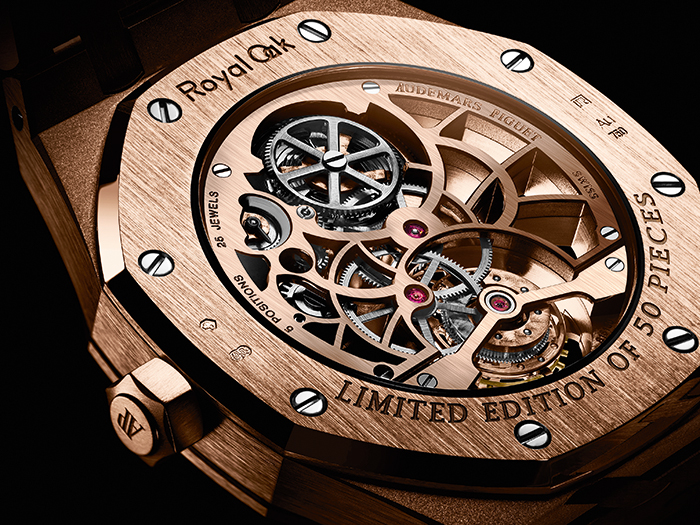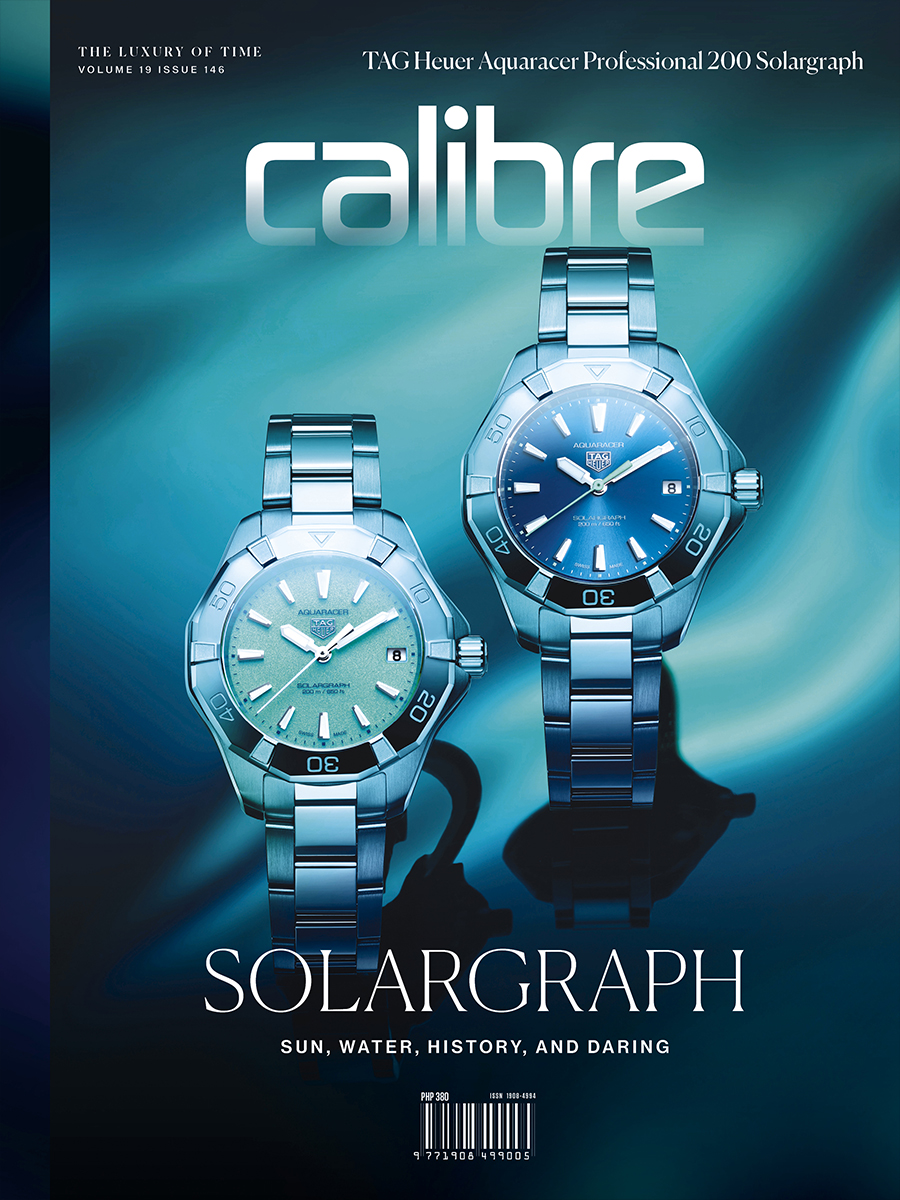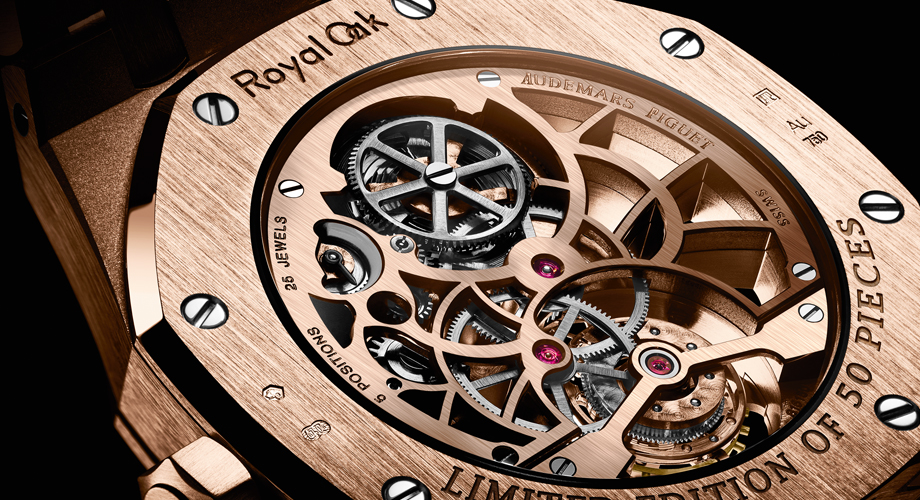The Royal Oak Tourbillon Extra-Thin Openworked is back! And while we may have seen its kind before (the first in platinum to mark the Royal Oak’s 40th anniversary in 2012, and the second as a follow-up model in yellow gold at the 2016 SIHH), Audemars Piguet is closing out the collection because it’s been announced that these will be the last to be offered with this skeletonized movement design.
As we all know, openworking involves the cutting away of material to reveal the inner workings of a watch. And to say that this is one of the most exacting procedures in watchmaking is an understatement: cut away too little and the effort isn’t worth it, cut away too much and you compromise the structural integrity of the movement.

Audemars Piguet has been a master of this particular specialty since the 1930s and the many models to come out of their manufactory floors have been highly coveted because of the consistent quality of work and the degree of transparency achieved. These two new models are no exception.
So, for 2017, Audemars Piguet is giving us the Royal Oak Tourbillon Extra-Thin Openworked in stainless steel, with a movement rhodium plated in cool, understated tones and limited to 100 pieces. The 18K pink gold model, on the other hand, features a pink gold mainplate and bridges, and is limited to only 50 pieces. Needless to say, with both models being the epitome of the watchmaker’s art, we expect them to sell out like hotcakes.

What is distinct here is that the hand-wound calibre 2924 is already an ultra-thin movement, and skeletonizing it further gave the Royal Oak Tourbillon Extra-Thin Openworked a much-needed “lightness” not generally associated with the model. The naturally aggressive corners and angles of the Royal Oak have been softened up here, and best of all, gone is the standard “Grand Tapisserie” dial, especially if you’ve never been a fan of the motif.
Finishing is, naturally, top notch. Which, really, is the point. Especially since all the filing and decoration here has been done by hand. No milling machines that produce perfectly acceptable rounded angles for Audemars Piguet, just the extremely talented artisan that can produce the perfect interior v-cut angles that so wonderfully reflect light. Look for the skeletonized bridges, especially at the points where they intersect, and you’ll see what AP was going for.

Best of all, the watch is extremely light, which we know from the stainless steel model. But we’d imagine that the 18K pink gold model would be relatively light as well, making both watches suitable for all-day daily wear.
So, one of the most enduring icons in contemporary watchmaking, ultra-thin movement skeletonized “just right,” lighter than it has any right to be, and limited enough to frustrate a majority of its many fans, that’s a win-win recipe for Audemars Piguet.




